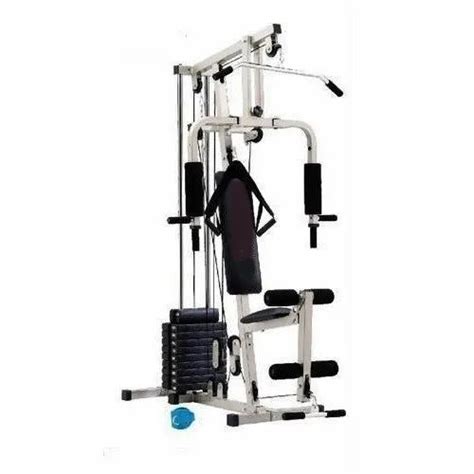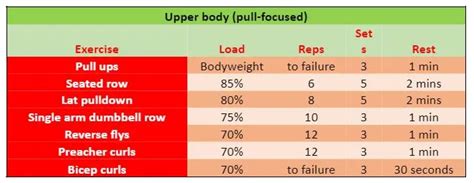Unlock peak strength: What specific progressive overload method works best for men?

The Non-Negotiable Foundation: Why Progressive Overload is Crucial for Strength
For men serious about building peak strength, understanding and implementing progressive overload isn’t just a suggestion—it’s the fundamental principle. Our bodies are incredibly adaptive machines. When you consistently challenge your muscles beyond their current capacity, they respond by growing stronger and larger. Without this continuous challenge, your progress will inevitably stall, leaving you stuck on a plateau.
Progressive overload means gradually increasing the stress placed on the musculoskeletal system over time. This forces your body to adapt, leading to gains in strength and muscle mass. While the concept is simple, the methods can be diverse, and some are more effective than others for the specific goal of maximizing strength.

Core Progressive Overload Methods for Strength Enhancement
When the objective is pure strength, certain methods take precedence. It’s about more than just ‘doing more’; it’s about strategic application of stress.
Increasing the Load (Weight)
This is arguably the most direct and effective path to strength. To get stronger, you must lift heavier. For peak strength gains, focus on rep ranges between 1-6 repetitions per set. Once you can comfortably complete your target reps with good form, it’s time to increase the weight. This constant pushing of your 1RM (one-rep maximum) and lower-rep strength is paramount.
Increasing Repetitions Within a Set
While often associated with hypertrophy, increasing reps is a vital stepping stone. If you’re targeting 5 reps with a certain weight but can only manage 3, working your way up to 5 reps with that same weight is a form of progressive overload. Once you hit your target rep range consistently, you then increase the weight and restart the cycle, ensuring you’re always challenging your muscles within a specific intensity bracket.
Increasing Sets (Volume)
Adding more working sets for a given exercise can increase total work capacity and contribute to strength gains, particularly for intermediate lifters. However, for maximum strength, quality of sets with heavier loads often trumps sheer quantity, so this method should be balanced with intensity.

Decreasing Rest Intervals
Reducing the time between sets makes the workout more challenging, improving work capacity and conditioning. While beneficial for overall fitness and muscle endurance, it’s generally less critical for pure strength gains, as adequate rest (2-5 minutes for strength work) is often needed to recover ATP stores for subsequent heavy sets.
Advanced Strategies for Sustained Strength Gains
Once you’ve mastered the basics, incorporating more sophisticated methods can help break through plateaus and drive continuous progress.
Improving Range of Motion (ROM) and Technique
This is a subtle yet powerful form of progressive overload. Lifting the same weight with a greater range of motion or with stricter, more efficient technique means you’re doing more work and placing more stress on the target muscles. Mastering form ensures safety and maximizes muscle engagement, leading to more effective strength development over the long term.
Increasing Training Frequency
For strength-focused individuals, training muscle groups more frequently (e.g., 2-3 times a week instead of once) can provide more opportunities to practice lifts and apply progressive overload. This method works well for compound movements like squats, deadlifts, and bench presses, allowing for more skill acquisition and volume accumulation.

Periodization (Linear vs. Undulating)
For advanced lifters seeking peak strength, a structured periodization model is often the most effective. This involves systematically varying training variables (intensity, volume, frequency) over specific cycles to prevent overtraining and ensure progressive adaptation.
- Linear Periodization: Gradually increases intensity (weight) while decreasing volume (reps/sets) over weeks or months, culminating in a peak strength phase.
- Undulating Periodization: Varies intensity and volume on a daily or weekly basis (e.g., heavy day, light day, moderate day). This can be very effective for maintaining a balance of strength and hypertrophy work.

What Specific Progressive Overload Method Works Best for Men Seeking Peak Strength?
While all methods have their place, for men focused squarely on unlocking peak strength, the primary and most effective method is consistently increasing the load (weight) lifted in low rep ranges (1-6). This should be coupled with a well-structured periodization plan that systematically challenges the body and allows for recovery.
Additionally, meticulous attention to improving form and range of motion is crucial to ensure efficient muscle activation and injury prevention, which ultimately allows for more consistent heavy lifting. Incorporating increased training frequency for major compound lifts can also accelerate strength gains by providing more opportunities for skill practice and volume accumulation.
Tracking your workouts diligently is non-negotiable. Knowing precisely what you lifted in previous sessions allows you to plan your progressive overload effectively. Listen to your body, prioritize recovery, and remain consistent. There’s no single magic bullet, but a strategic combination of these methods, with a strong emphasis on increasing weight and smart periodization, will be your most potent weapon in the quest for peak strength.







